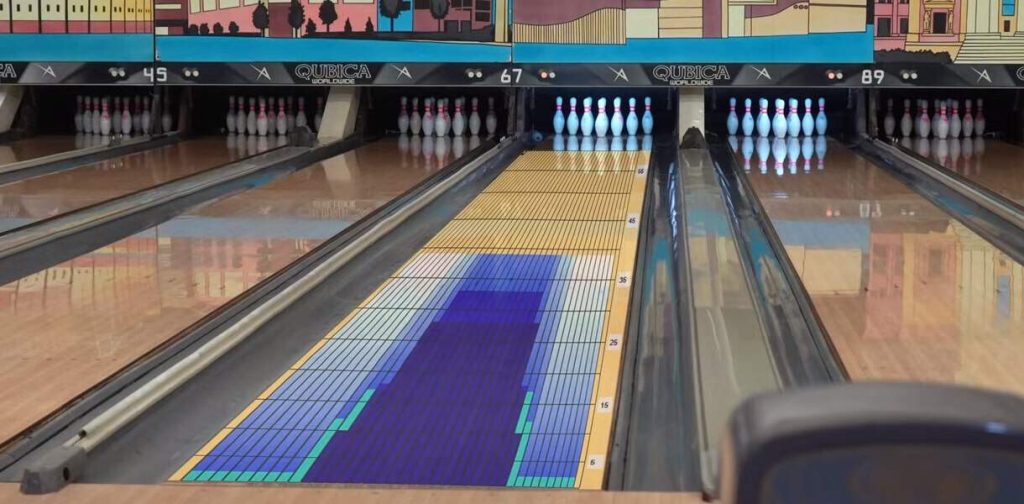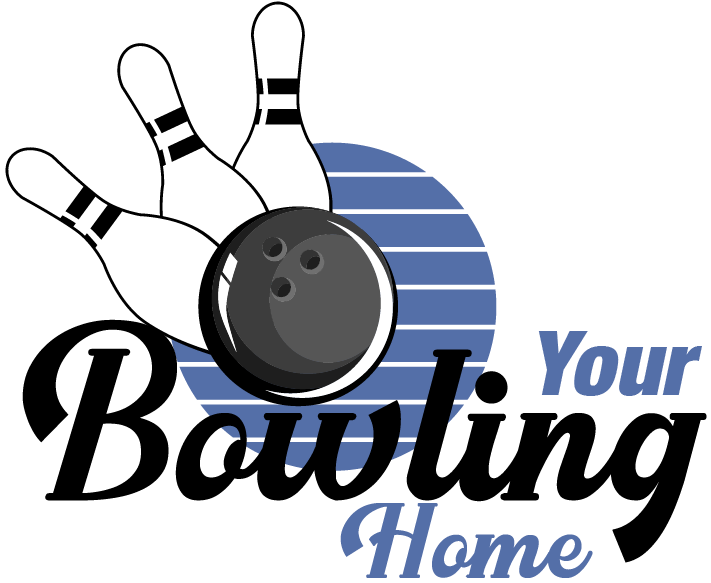Bowling balls have a will of their own as they journey down the lanes. I used to believe it was all about precision, practice, and the technique of releasing the ball. But, there’s an unseen factor at play, one that many recreational bowlers aren’t aware of.
Turns out, a ball’s smooth glide comes from the protective oil applied on the alley, which maneuvers the curves and twists, simulating a strike.
To crack the code of the ‘perfect game,’ we must first unravel the mystery of oil patterns in bowling. From the challenging “shark” pattern to the tricky “chameleon,” each one offers a unique set of challenges.
Grab your gear and come with me as we uncover the secrets of the lanes. Because in bowling, understanding the oil patterns is crucial—it’s half the battle won.
What is an Oil Pattern in Bowling?

Oil is the unsung hero in the bowling world, keeping the ball rolling smoothly. Imagine launching your ball down a lane stripped of oil: it would zigzag uncontrollably, almost like a bull in a rodeo arena.
Luckily, modern bowling alleys are equipped with a lane machine, a device that applies oil in precise patterns.
That’s where the magic happens: the blend of oil patterns makes every game unique. Thanks to the oil, no two games are the same, offering a refreshing challenge every time you play.
So, as you release the ball to glide down the oiled 60-foot lane (thicker in the center with drier edges), it sets the stage for a perfect strike.
Types of Oil Patterns
Oil patterns on bowling lanes are of many types, but a popular way to categorize them is by length: short, medium, and long. This length determines the timing of the ball’s hook, making the game more interesting and strategic for the players.
House Shot Pattern

The House pattern bowling is famously known as the bowler’s best friend. This is the ultimate secret that makes your local bowling alleys so easy to work with. This pattern turns gutter balls into strikes, making it easier on amateur bowlers and newbies.
With more oil in the middle and less oil on the sides, it acts like a helping hand that guides your ball straight to the pins.
Simply roll the ball down the middle for a smooth ride, or flirt with the edges for a sweet curve back to the target. This is ideal for beginners, and it can even make you feel like a pro on your off days.
Sport Shot
Sports shot oil pattern makes for a spicy challenge in the bowling world. Unlike the ever-forgiving house shot pattern, sports shots spread the oil evenly, turning every lane into a precision test.
There’s no room for error. With lengths ranging from short to long, each shot demands its strategy – where to aim, how fast to roll, and even the angle of your wrist. It’s a game of finesse and focus, where mastering the lane’s unique demands is the way to victory.
Flat Pattern
The “Flat” pattern got its name from the way the oil is applied uniformly over the width of the lane.
If you roll the ball too straight, it’ll go rogue, crossing lanes like a renegade. Swinging it wide is a surefire way to send your ball down the gutter, so you unintentionally miss all the action.
What makes it challenging is the lack of distinct “dry” or “oily” areas. With the lack of variation in oil to exploit, the precision of the target and controlling of ball speed depends more on your strategy and gameplay.
Chameleon Pattern
Just as the name suggests, the “chameleon” pattern changes colors throughout the game. The oil volume is medium and spread evenly across the lane.
You will find a consistent amount of oil from the foul line to the pins; however, the concentration might vary along the width.
The chameleon challenges the player to change and adapt frequently to adjust to the lane conditions.
You won’t be able to stick to one bowling style while playing the lane and must continually read the conditions and make your move accordingly.
Shark Pattern
If you look at the “shark” bowling pattern, it resembles the image of a shark swimming underwater. Like the apex predatory, it can cut down your chances of making that strike if you don’t know how to work its lanes.
You will find a thicker concentration of oil in the middle of the lane, which gradients outwards like shark fins.
This “wall” of oil makes it difficult to create a direct line for a strike, while the lack of oil on the sides increases friction, making the ball hook too early.
To play this more aggressive oil pattern, the bowlers must play deeper angles or adjust their shots to create angles that enable them to create angles into the pocket.
How Do You Read a Bowling Oil Sheet?
The oil pattern sheet is easier to read than you would this. The darker areas of the graph-like representation show a higher oil concentration, and the lighter shade shows a thinner coating.
The key aspect is to know how your ball will react once it comes in contact with the lane. Areas with less oil give you an early hook, while oily surface controls the skid and keep your shot straighter.
Final thoughts
Now that you know how the bowling oil patterns work, I hope that the next shot you take is a strategic one.
Reading the oil print on the lane will help you predict how your ball will react, enabling you to make a shot that will get you that strike.
